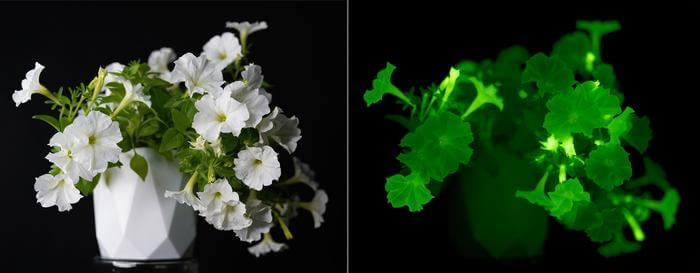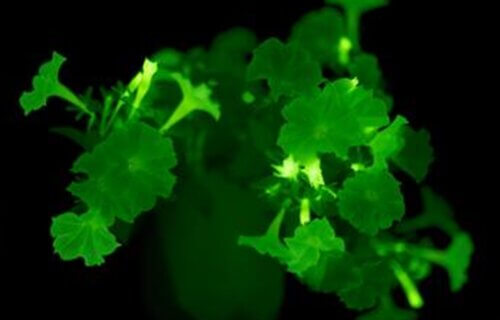SUN VALLEY, Idaho — Researchers have developed flowers capable of both growing and glowing in the dark by incorporating a gene from fungi. This innovation has led to the creation of the Firefly Petunia plant, which emits a natural glow reminiscent of moonlight, thanks to the exploitation of the newly identified plant gene.
This gene varies among different species and helps with the conversion of living energy into organic light. There are plans underway to enhance the brightness of these plants, potentially lighting up homes and gardens.
The study, published in the journal Science Advances, builds on earlier research that demonstrated the natural glow of luminous mushrooms and its alignment with plant metabolic processes. The gene, native to plants, boosts their bioluminescence by optimizing the interaction between light and energy, according to Light Bio, a synthetic biology startup behind the development.
Traditional methods for creating glowing plants required the insertion of five genes from fungi. However, this recent study has shown that a single plant gene can replace two fungal genes, offering a simpler and more versatile approach due to its smaller size and less complex biological requirements.

This gene acts as a crucial link between plant metabolism and light production, translating the plant’s internal processes into a visual display of natural light. The Firefly Petunia, one of the creations by Light Bio, is especially popular for its soft green glow, resembling moonlight, and its resemblance to the luminescence of fireflies. Chosen for its ornamental value, the petunia now glows up to a hundred times brighter than before, making it the most radiant example of Light Bio’s work.
The choice of petunias, known for their easy cultivation and abundant flowering, was strategic for showcasing this innovative light enhancement. In September, the U.S. Department of Agriculture confirmed the Firefly Petunia’s safety for cultivation and breeding nationwide. Light Bio, collaborating with Ginkgo Bioworks, aims to increase the brightness of future plant varieties by ten-fold and expand the range of colors and types available.
“Sales for this remarkable plant have been impressively robust. We’ve had to ramp up production twice already to keep pace with the demand,” says Keith Wood, the CEO of Light Bio, in a media release.
The research teams also believe that their findings will pave the way for significant advances in critical areas such as crop development and disease resistance.

How much will they cost?